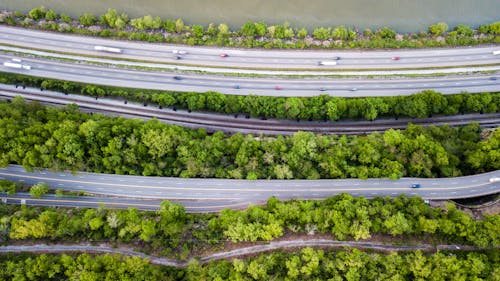Rutgers—Camden works on largest-ever open-road traffic experiment

Last month, researchers at Rutgers—Camden collaborated with various universities, automotive companies and the Tennessee Department of Transportation to facilitate a vehicle traffic study using artificial intelligence technology, according to a press release.
Benedetto Piccoli, vice chancellor for research at Rutgers–Camden and the University’s lead researcher for the study, said it was part of the Congestion Impacts Reduction via CAV-in-the-loop Lagrangian Energy Smoothing (CIRCLES) Consortium.
As part of the consortium, Rutgers—Camden worked with international researchers from France, Germany and Israel as well as American universities such as the University of California—Berkeley, Vanderbilt University, The University of Arizona and Temple University.
Piccoli said Rutgers—Camden has participated in CIRCLES since its inauguration five years ago but his own research on traffic began in the early 2000s. He said in the last decade, such research has shifted from documenting traffic to regulating it, especially due to the creation of autonomous vehicles.
He said the most recent study conducted by CIRCLES used more than 100 high-resolution cameras, each placed on a 100-foot-high pole, spanning 4 miles of roadway.
These 4 miles, located on Interstate 24 in Nashville, Tennessee, constituted a research platform four times larger than any other one used in traffic-related research before.
Over a span of five days, researchers in the CIRCLES program sent out more than 100 "level-two autonomy" vehicles every day onto the platform, Piccoli said.
Levels of autonomy can range from level one, which includes cars with no automotive features, to level five, which includes fully self-sufficient cars, he said. Vehicles at the second level, like those used in the experiment, have some form of cruise control automation.
"I think that most of the cars in the last 20 years have a cruise control mechanism," Piccoli said. "This is the mechanism you activate typically when you are on a highway: You fix a given speed, and the car will try to drive at that speed."
He said recent developments in autonomy also include the features that allow vehicles to determine how far away they are from those in front of them. Such features let vehicles control desired speeds while maintaining cautious distances from others.
"We are talking about the level-two autonomy cars and (how) they smooth traffic," Piccoli said. "We will have a few months of work in analyzing the data before making final claims about the results."
Piccoli said this particular study sought to see how much fuel consumption could be decreased on highways by using self-driving vehicles to maintain a consistent pace in traffic.
Mikail Mahmood, a junior at Rutgers—Camden’s College of Arts & Sciences and a student researcher involved with the project, said using automated cars to control traffic can minimize blockages and the amount of fuel used to respond to them.
"This would be accomplished through strategically placed self-driving cars with the purpose of smoothing traffic out so there are no jams and so traffic can flow smoothly, also resulting in less gas being wasted on stopping or repeated braking," he said.
Though Rutgers—Camden contributed to this project in multiple ways, the school primarily focused on the research’s scenarios component, which seeks to pinpoint potential problems, implement safeguards for the experiment and devise optimal travel routes, Mahmood said.
Navigating the logistics of a study this large posed some challenges, said Sean McQuade, an associate researcher at Rutgers–Camden and postgraduate researcher at CIRCLES.
He said that even minor adjustments to the experiment, such as providing keys and labeling cars, took considerable time.
Piccoli said that experiment’s researchers would need to wake up early to send out cars on the roadway by 6 a.m. in order to mimic congested traffic conditions during mornings.
They would then continue to lead the study for approximately 7 to 8 hours and begin analyzing data afterward, he said. Those involved in the experiment would all meet in the evening, totaling more than 16 hours of work per day.
"That is a challenge because you are really on a tough schedule," Piccoli said. "But if you want to realize these types of large-impact things, that's the type of effort you need to put in."
Despite the working schedule, he said that the size of the study made it a distinctive opportunity for students and researchers involved to learn how these projects work.
Additionally, Piccoli said that the experiment fostered bonding across different backgrounds, countries and disciplines.
"Sometimes you say 'go the extra mile,'" he said. "In this case, we went many extra miles beyond the normal activity they do. It is of paramount importance that people do this type of effort for this type of success."



